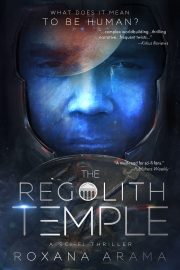THE INDIE FILES: How to Bring Your Indie Book to the Attention of a Librarian
by Kelly McClymer
Do you dream of seeing your indie book in your local library catalog?
You are not alone.
Many a traditionally published author shares your dream. Here are a few hard facts:
- Libraries generally purchase hardback library editions (volumes that have had the spines reinforced to hold up for multiple reads).
- Shelf space is limited, and the competition is stiffer than ever.
- E-books and audiobooks offer some opportunities for indie authors, but that requires finding ways to let the librarians know how (and why) to buy your book for their electronic catalog.
- Librarians notice books the same way booksellers and readers do: bestseller lists, word of mouth, and viral social media attention.
As an indie author, you may have a way to get a librarian’s attention that is not available to the traditionally published author—letting the library acquire the book in the way that suits them best. If they would like a library hardback edition, you can do that. If they buy from a certain eBook or audiobook catalog, you can make sure your book is available there.
Key phrase: get the librarian’s attention. Librarians, like most readers, want more books that they can afford to buy, so they have to prioritize according to their patrons’ desires and interests.
Weighing the E-Book Catalog vs. Book-on-the-Shelf
Real Book
Creating a library edition of your book is an expense, so taking that on should only be done if you are certain your book will appeal to the library patrons. For example, if your book won (or was shortlisted for) a Nebula Award, that would give it a higher priority on the library wish list.
According to Justin Hoenke, director of the Gardiner, Maine, library, he generally prefers hardbound editions because they hold up better. Some libraries have the staff and resources to reinforce paperbacks to hold up under multiple reads, but most do not. One thing many authors have learned through the years is that donating a book to a library does not mean it will get cataloged and shelved. It could go into the annual book sale box.
Many readers (and librarians, and authors) prefer “real” books that they can hold, bookmark, and—admit it—smell. So, if your budget allows you to create a library version of your book, that may give you a nudge up on the library’s priority buying list. That means creating an edition specifically for libraries that is case-bound instead of perfect-bound. Ingram Spark has an excellent explanation of this distinction here. With print-on-demand (POD) printing, the extra expense is figured into the cost. Libraries are used to paying more than retail for sturdier books, but you may still need to shave off some of your profit margin when you choose your library price.
Some authors have chosen to outsource printing to a specialty book printer. These authors want to lower the costs and know they have to order a certain number of case-bound hardcovers for sale/distribution to libraries or collector fans. That can get expensive, with minimum printings of a hundred to a thousand copies. This would work best for authors who plan to do serious marketing and outreach to libraries, or have a pre-order method in place so that they don’t over-order. A few other companies which offer case-bound hardcover book production are Acutrak, Blurb, and 48hr Books. NOTE: there is also a saddle-stitch printing option that is not offered by most small printers or POD printers, so not a part of this discussion.
A case-bound large print edition could also make your book attractive to libraries, but it is worthwhile to cost the project out and approach a few libraries to see if there is interest before you decide whether to make it POD or do a small print run to save cost and increase your profit. Large print editions run to more pages and thus are more expensive to print and take up more shelf space in the library.
E-Book or Digital Audiobook
Putting your e-book or digital audiobook into a library-available catalog generally does not incur extra cost for you. Best of all, you can offer a special (higher) library edition price too, to reflect that your library edition will be read by more than the single reader who purchases your consumer edition. Draft2Digital and Kobo both allow you to make e-books available for purchase by a library, but it is not automatic; you need to choose that option, plus a library price when you upload your book. The Indie Author Project will allow you to upload your book metadata to reach librarians as well.
The Dreaded Marketing
No matter how you plan to get your book into the library catalog, it is your job as an indie author to market those titles to the libraries. Facebook is a wonderful resource for finding and researching libraries and the librarians who staff them. Caveat: do not pitch the library your book on Facebook! Simply note what books they enthusiastically talk about with their patrons, and find out your best contact person (preferably off-Facebook).
What To Do Before Approaching The Library
- Get a book in a library-specific catalog through a distributor like Draft2Digital, Kobo, or the Indie Author Project (as discussed above).
- Create a library edition in paperback or hardcover, if you want to be on the shelf.
- Put together a “why your patrons will love it” PDF.
- Find out the name(s) of the librarian in charge of buying books and what they like.
Reaching Lots Of Librarians At Once
- Get reviewed by Kirkus, Library Journal, Publishers Weekly, School Library Journal, Indie Author Project (IAP) Select (curated by Library Journal). NOTE: Often this involves getting your book to the reviewer six months in advance of publication, so be aware of that condition if you really want that review.
- Go viral on genre fiction blogs, social media, podcasts, or TikTok’s BookTok.
- Encourage your readers to ask their libraries to acquire the book.
- Use the Indie Author Project (IAP) Select.
- Speak at a library conference, local or national. You can find many of them listed on the American Library Association (ALA) site. Or ask your favorite librarian for recommendations of nearby conferences that accept proposals from authors.
Bottom Line
The opportunity is there to get your book into libraries, but you have to do the work, just as you do when you market to your individual readers.
 USA Today-bestselling author Kelly McClymer considers herself a reader first and an author second. She loves letting her characters take her wherever they want to go, whether it be to another planet, another time, or another crime scene. She continues to learn so much from her fellow indie authors. Her only wish is to be less stubborn, so she can get the important lessons more quickly, and without so much argument and angst.
USA Today-bestselling author Kelly McClymer considers herself a reader first and an author second. She loves letting her characters take her wherever they want to go, whether it be to another planet, another time, or another crime scene. She continues to learn so much from her fellow indie authors. Her only wish is to be less stubborn, so she can get the important lessons more quickly, and without so much argument and angst.



